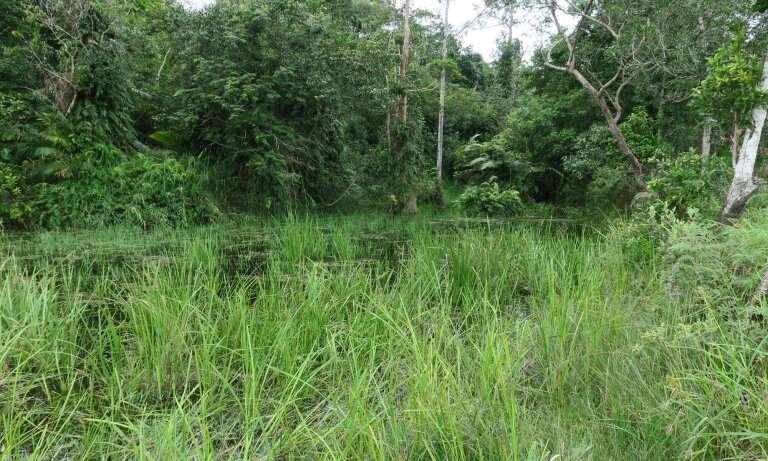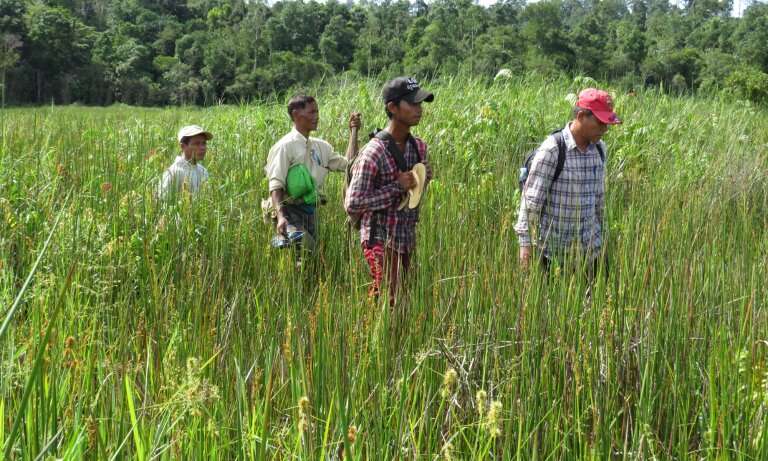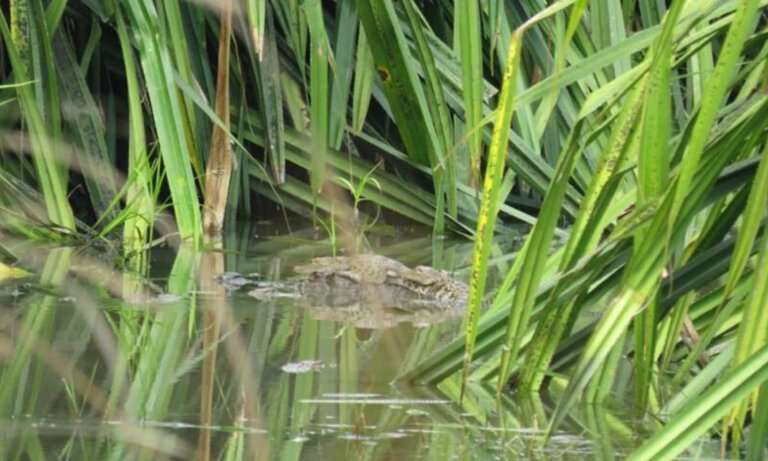Record number of wild baby Siamese crocodiles spotted in Cambodian hotspot

Ten baby Siamese crocodiles have been spotted in the wild in Cambodia, a sure sign that conservation efforts are having a real impact on a species once believed to be extinct in the wild.
The sighting of the entirely wild hatchlings—the largest number recorded in the country by conservationists—provides irrefutable evidence that the species is breeding in the wild.
It could be a game-changing moment for this critically endangered reptile, which Fauna & Flora International (FFI) has been working to bring back from the brink of extinction for the past two decades.
20 years and counting
In early 2000, FFI-led expeditions to Cambodia's vast and remote Cardamom Mountains unearthed some spectacular biological discoveries. One of the most momentous finds was the rediscovery—by a team led by FFI's senior conservation biologist Jenny Daltry—of several viable populations of the Siamese crocodile, which had been presumed extinct in the wild.
Since their presence was first confirmed in the Cardamom Mountains, more than 150 Siamese crocodiles have been recorded at 18 separate sites by FFI-led surveys. The Cambodian government moved swiftly to strengthen protection for the species, notably by gazetting a 400,000-hectare area of forest in the central Cardamoms.

Following the rediscovery, FFI established the Cambodian Crocodile Conservation Programme. This partnership with the Cambodian government is helping to monitor and protect the species, as well as reinforcing the wild population by breeding crocodiles in captivity and releasing the juveniles once they are large enough to fend for themselves.
Since 2012, the success of the breeding program has enabled FFI and partners to release a total of 111 captive-bred Siamese crocodiles into sanctuaries that are managed in consultation with local communities and protected by community wardens.
Communities and crocodiles
Veal Veng Marsh, where the wild hatchlings were spotted, contains the largest known colony of Siamese crocodiles in Cambodia. This unique wetland is also home to some of Cambodia's most impoverished—and, until recently, remotest—communities, whose people have traditionally revered the crocodiles as sacred animals, but who have previously struggled to feed their families for up to half the year.
For the past two decades, FFI has worked closely with community leaders and local partners to improve the livelihoods of these people in ways that are sustainable, culturally appropriate and compatible with the conservation of Siamese crocodiles and other threatened biodiversity.
After being encouraged to embrace low-cost, organic techniques aimed at increasing and diversifying food production on existing farmland, villagers saw rice yields triple. They also began to earn money from cooperative sales of renewable forest products, including cardamoms.

In turn, the communities themselves have proactively defended Siamese crocodiles and their habitat; as early as 2003—on their own initiative—they began forming joint forest patrols with government rangers, in order to combat crocodile collectors, poachers and illegal loggers.
In recent years, however, there has been an influx of people from other parts of Cambodia, and even overseas, laying claim to land and adding to the pressure on the crocodiles and their wetland home.
Hope for the future
Not only are the remaining wild populations of Siamese crocodile small and fragmented, but, until now, they have shown very little evidence of breeding. This makes the latest news all the more significant.
Pablo Sinovas, Flagship Species Manager for FFI in Cambodia, believes this is "a pivotal moment" for the Siamese crocodile: "For a species that for a long time was believed to be extinct in the wild to be breeding and producing hatchlings is extremely exciting. Reproduction of a species in the wild is a key measure of success in terms of population recovery and long-term viability. It shows our conservation efforts are working."
In the longer term, FFI is aiming to establish additional suitable wetland sanctuaries for the Siamese crocodile in Cambodia, as part of its ongoing efforts to release and monitor increased numbers of these revered reptiles, which have disappeared from 99% of their original range.
Provided by Fauna & Flora International





















